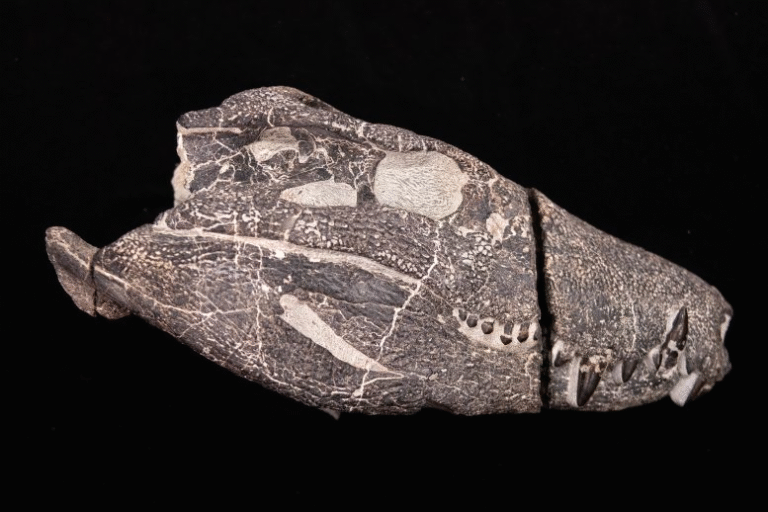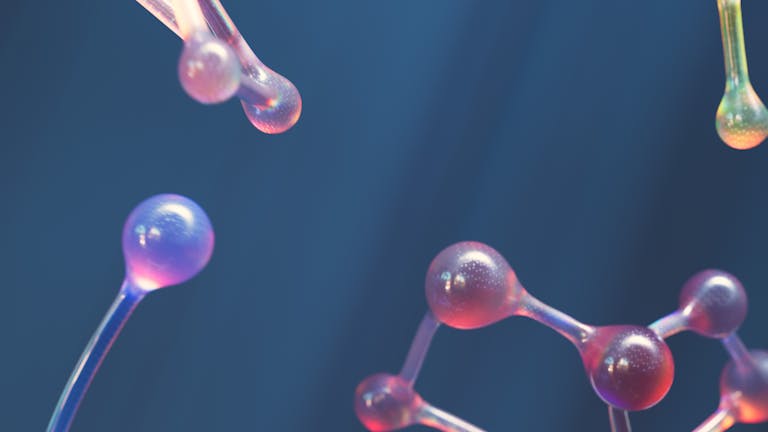Scientists Discover Fatty Acid Treatment That Reverses Aging Eyes — At Least in Mice

A team of researchers at the University of California, Irvine (UCI) has made a remarkable discovery that could one day help restore youthful vision lost to aging. By supplementing the eyes with specific fatty acids, scientists have managed to reverse age-related vision decline in mice — a finding that might open new doors for combating conditions like age-related macular degeneration (AMD).
The study, published in Science Translational Medicine on September 24, 2025, shows that tweaking how the eye processes certain fats can dramatically improve eyesight in aged animals. The research centers on a gene called ELOVL2, known for its connection to the biological aging process, and its role in producing key fatty acids that support retinal health.
The Gene That Keeps the Eyes Young
The gene ELOVL2 stands for Elongation of Very Long Chain Fatty Acids Protein 2. It’s a mouthful, but its job is crucial — it helps create very-long-chain polyunsaturated fatty acids (VLC-PUFAs), which are essential for the retina’s structure and function. These fats help maintain the membranes of photoreceptor cells that allow us to detect light and contrast.
Over time, ELOVL2 activity naturally declines, leading to reduced levels of VLC-PUFAs in the retina. As a result, the visual system starts to falter — contrast sensitivity drops, dark adaptation slows down, and eventually, damage can accumulate in retinal tissue. The decline in these specialized lipids is also associated with AMD, a leading cause of blindness among people over 60.
Interestingly, the methylation (a type of chemical tag that suppresses gene expression) of the ELOVL2 promoter increases with age. In fact, ELOVL2 methylation is one of the most accurate biomarkers of biological age known in humans.
The Experiment: Turning Back the Clock
In their new study, the UCI researchers decided to bypass the ELOVL2 enzyme entirely and test whether supplementing the retina directly with the missing fatty acids could rejuvenate the eye.
They used older mice whose natural vision had already declined. Instead of the typical omega-3 fatty acid DHA, which is widely available in fish oil supplements, the researchers used a specialized fatty acid known as 24:5n-3 or tetracosapentaenoic acid (TPA) — a direct product of the ELOVL2 pathway.
The scientists delivered the fatty acid directly into the eye using intravitreal injections, the same method used in some human eye treatments today.
The results were striking. Within weeks, the aged mice displayed sharper contrast sensitivity, better dark adaptation, and stronger retinal function. On a molecular level, their retinal cells started to resemble those of younger animals, suggesting that the treatment had actually reversed some of the aging processes in the eye.
How It Works: Fatty Acids and Vision
The retina — the light-sensitive tissue lining the back of the eye — depends on a delicate balance of lipids to function properly. These lipids affect how photoreceptor membranes behave, influence how light signals are transmitted, and even impact how cells resist oxidative stress.
When ELOVL2 activity slows with age, VLC-PUFA levels drop, and the retina becomes more vulnerable to damage. Photoreceptor membranes lose flexibility, light-sensing performance worsens, and toxic deposits start to form beneath the retina.
The study showed that injecting 24:5n-3 replenished the missing lipids, restoring the retina’s structural and molecular integrity. The treated mice had fewer APOE- and C3d-positive sub-retinal deposits, both of which are markers of age-related retinal damage.
In essence, the eye regained some of its lost biochemical youthfulness.
What’s Special About This Fatty Acid?
It’s worth noting that the effect wasn’t seen with DHA, the better-known omega-3 fatty acid found in fish oils. While DHA supports general eye health, it did not reverse aging in this experiment.
The team’s findings suggest that DHA alone cannot substitute for the unique functions of VLC-PUFAs, which are much longer and rarer fatty acids. The retina appears to need these extended-chain molecules to maintain its performance, and when they decline, no common supplement can fill the gap.
This is why the ELOVL2 enzyme — the protein responsible for making these ultra-long fatty acids — is considered so important. When it stops working properly, aging accelerates not only in the retina but also, as other studies show, in parts of the immune system.
Genetic Clues Linking ELOVL2 to Human Disease
To explore how this mechanism might relate to human health, the researchers examined genetic data from large population studies, including the International Age-Related Macular Degeneration Genomics Consortium (IAMDGC) and the UK Biobank.
They discovered that two genetic variants near the ELOVL2 gene were associated with earlier onset of intermediate AMD. This finding adds a human dimension to the mouse results — it suggests that differences in how our bodies produce or regulate VLC-PUFAs might influence how quickly our eyes age and how susceptible we are to retinal diseases.
In the future, genetic screening for these ELOVL2 variants could help identify people at higher risk of vision decline. Those individuals might benefit the most from lipid-based interventions or lifestyle adjustments targeting lipid metabolism.
Beyond the Eyes: Fatty Acids and the Aging Immune System
The implications of this research go beyond vision. In collaboration with scientists at UC San Diego, the UCI team found that a lack of ELOVL2 also speeds up the aging of immune cells.
In experiments with mice, when ELOVL2 was disabled, immune stem cells in the bone marrow aged faster and lost their regenerative capacity. In human samples, older individuals showed a decline in the number of stem and progenitor cells expressing ELOVL2.
This suggests that lipid metabolism plays a central role in aging, not just in the retina but across multiple systems in the body. It also raises the possibility that systemic fatty acid supplementation might one day help counteract aspects of immune aging — a fascinating idea that could reshape how we think about anti-aging therapies in general.
Why This Discovery Matters
Age-related vision loss is one of the most common and frustrating aspects of getting older. It affects reading, driving, and overall quality of life. The most well-known condition in this category, age-related macular degeneration, affects millions of people worldwide and has limited treatment options.
While current AMD treatments focus on managing late-stage symptoms — such as abnormal blood vessel growth — they don’t address the fundamental aging process of the retina.
This new research points to a potential root cause: the gradual loss of specific lipids essential for healthy retinal function. If scientists can restore those lipids — whether by direct injection or through a systemic supplement — it might be possible to slow, halt, or even reverse the natural decline in vision that comes with aging.
From Mice to Humans: The Next Steps
Although these results are exciting, it’s important to keep in mind that the study was done in mice, not humans. Intravitreal injection is an established method for delivering drugs to the eye, but it’s invasive and not ideal for regular preventive treatment.
The research team is exploring whether the fatty acid could be formulated into a less invasive delivery system, possibly an oral supplement or eye drop. However, whether enough of the compound would reach the retina through those routes remains to be seen.
Clinical trials will also need to test safety, dosage, and long-term effects. In the mouse study, improvements lasted for about four weeks, so researchers will need to understand whether repeated treatments are necessary and whether the same benefits occur in human eyes.
The Bigger Picture: Lipids and Aging
The connection between lipid metabolism and aging is becoming a major focus in biology. Lipids aren’t just passive fats; they play active roles in cell signaling, inflammation control, and membrane function. Changes in lipid composition have been linked to aging in the brain, heart, and immune system.
By targeting lipid metabolism, scientists may be able to tackle the aging process from a new angle — one that complements other approaches like DNA repair or antioxidant therapy. The ELOVL2 discovery adds powerful evidence that maintaining the right balance of very-long-chain polyunsaturated fatty acids could be key to keeping tissues youthful.
What We Know So Far
Here’s a summary of what this new research establishes:
- ELOVL2 is a critical gene involved in producing very-long-chain fatty acids that keep the retina functioning properly.
- As we age, ELOVL2 activity decreases, leading to reduced levels of these essential lipids and a decline in vision.
- Supplementing aged mice with 24:5n-3 fatty acid restored their visual function and reversed molecular signs of aging in the retina.
- The treatment reduced retinal deposits and improved contrast sensitivity and dark adaptation — both measures of visual performance.
- Human genetic data links ELOVL2 variants to faster progression of AMD, suggesting a possible path for early detection and targeted therapy.
- The same lipid pathway also affects immune system aging, hinting that fatty acid therapies might have broader anti-aging potential.
What It Doesn’t Mean Yet
This discovery doesn’t mean that fish oil or over-the-counter omega-3 supplements can restore aging eyes. The specific fatty acid tested — 24:5n-3 — is different from DHA and isn’t found in typical supplements.
It’s also not a ready-made cure for AMD or age-related vision decline in humans. The therapy needs to be tested for safety and efficacy in clinical trials, which could take several years.
Still, the findings represent one of the most promising examples of reversing an age-related decline in a complex organ. If similar results can be achieved in people, this research could reshape how we approach both eye health and the biology of aging.





